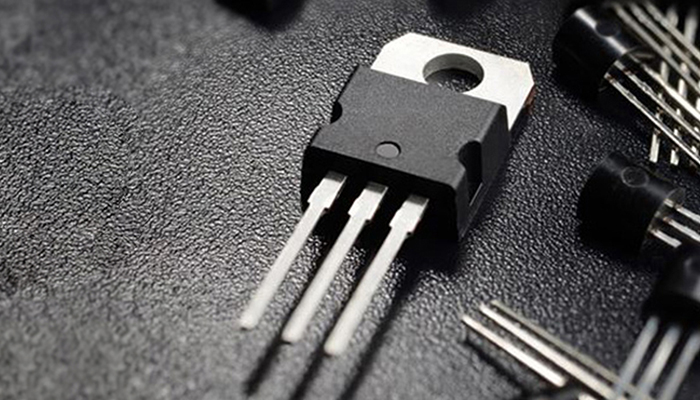Fast Recovery Diodes (FRDs): The High-Speed Backbone of Modern Power Electronics
Diodes are among the most fundamental semiconductor components in electronics, playing a vital role in converting alternating current (AC) into direct current (DC)—a process known as rectification. From household appliances to advanced computing systems, virtually every electronic device relies on this conversion to obtain a stable DC supply for reliable and efficient operation.
As modern electronic systems increasingly demand higher efficiency, smaller size, and lower power consumption, high-frequency switching has become essential. However, while traditional rectifier diodes offer proven reliability and cost-effectiveness in low-frequency environments, they face significant performance limitations at higher switching frequencies.
To overcome these constraints, a specialized type of diode—the Fast Recovery Diode (FRD)—was developed. Known as the “speed engines” of power electronics, FRDs incorporate sophisticated design techniques that enable efficient and reliable operation under high-frequency switching conditions, making them indispensable in today’s power conversion systems.
Traditional Rectifier Diodes: Principles and Limitations
What Is a Rectifier Diode?
A rectifier diode is a semiconductor device—typically silicon-based—designed to allow current to flow in only one direction. This unidirectional conduction is made possible by the PN junction, formed by joining P-type (hole-rich) and N-type (electron-rich) semiconductor regions.
Forward bias: When a positive voltage is applied to the P-side, the depletion region narrows, allowing current to flow with a typical forward voltage drop of about 0.7 V.
Reverse bias: Applying reverse voltage widens the depletion region, blocking current except for a small leakage current.
Key Characteristics and Applications
Typical performance metrics include:
IF (Average Forward Current)
VR (Reverse Voltage Rating)
VF (Forward Voltage Drop)
Traditional rectifier diodes are optimized for high current and voltage handling, making them ideal for low-frequency circuits (< 500 Hz) such as:
Linear power supplies
Battery chargers
Simple DC motor drives
Household AC–DC conversion stages
The Bottleneck: Slow Switching Speed
The most critical limitation of traditional diodes at high frequency is their long reverse recovery time (trr)—typically several to tens of microseconds.
During forward conduction, minority carriers accumulate in the diode. When the voltage reverses, these carriers must be cleared before the diode can fully block reverse current. A long trr results in:
Increased power loss due to reverse recovery energy
Significant noise and electromagnetic interference (EMI)
Reduced system efficiency
These limitations highlight the need for a diode with dramatically faster switching capability—leading to the development of the Fast Recovery Diode.
Fast Recovery Diodes: Engineering for Speed
What Defines “Fast Recovery”?
Fast Recovery Diodes (FRDs) are engineered to substantially shorten reverse recovery time—from the microsecond range (traditional diodes) to 25–100 ns, depending on the “fast” or “ultrafast” type.
Their operating frequency typically ranges from several kHz to over 100 kHz.
How FRDs Achieve High Speed
Although structurally similar to PN junction diodes, FRDs incorporate:
Thinner N-type drift region: reduces stored charge
Heavy-metal doping (Au, Pt): forms recombination centers that significantly accelerate minority carrier removal
These modifications drastically reduce minority carrier lifetime, leading to far shorter trr.

Key Performance Metrics of FRDs
Reverse Recovery Time (trr): 25–200 ns
Forward Voltage Drop (VF): higher (1.3–3.6 V) due to structural trade-offs
Reverse Voltage Rating (VR): typically 600–1200 V
Reverse Leakage Current (IR): low, though slightly higher in aggressively doped ultrafast types
FRDs can exhibit:
Hard recovery: sharp current drop, more EMI
Soft recovery: smoother transition, lower noise—preferred for modern power electronics
Advantages in Modern Circuits
Extremely fast switching capability
Reduced reverse recovery losses
Higher system efficiency
Lower heat generation
High reverse voltage capability
Good thermal stability
Where FRDs Are Used
FRDs are essential in high-frequency, high-voltage applications such as:
Switch-mode power supplies (SMPS)
DC–DC converters
Inverters
Power factor correction (PFC) circuits
UPS systems
Photovoltaic inverters
EV charging infrastructure
Motor drivers and industrial automation
Fast Recovery vs. Standard Diodes: Direct Comparison
| Parameter | Traditional Diode | Fast Recovery Diode (FRD) |
| Reverse Recovery Time | Microseconds | Nanoseconds |
| Switching Loss | High | Low |
| VF | Lower | Higher |
| High-Frequency Capability | Poor | Excellent |
| EMI Performance | Worse | Improved (soft recovery types) |
| Cost | Lower | Higher |
| Typical Use | Low frequency | High-frequency power electronics |
How to Choose the Right Diode
Low-frequency circuits (50/60 Hz): choose standard rectifier diodes—FRDs offer no benefit and increase cost.
High-frequency (> kHz), high-voltage circuits: FRDs are essential for efficiency and thermal performance.
Selecting a diode is therefore a balance between:
Cost
Efficiency
Switching speed
Voltage requirements
Beyond FRDs: Schottky Barrier Diodes (SBDs)
Schottky diodes represent another class of high-speed diodes with unique advantages.
Key Characteristics
Unipolar conduction: only majority carriers—no minority carrier storage
Essentially zero reverse recovery time (trr ≈ 0 ns)
Very low VF (0.4–0.6 V)
Limitations
Higher reverse leakage current
Lower reverse voltage rating (typically < 150 V)
Best Use Cases
Ultra-high-frequency, low-voltage power stages
RF applications
Voltage clamping
Low-voltage SMPS rectification
Choosing between FRD and SBD depends on voltage and frequency requirements—SBD for speed + low voltage, FRD for high voltage + high frequency.
Fast Recovery Diodes (FRDs) are far more than simply “faster” versions of conventional rectifier diodes. They are purpose-built devices that enable the high-frequency operation essential for modern power electronics.
With dramatically reduced reverse recovery time, they provide:
Higher efficiency
Lower losses
Better thermal performance
Improved EMI characteristics
As power conversion technologies continue to advance—driven by renewable energy, electric vehicles, and compact high-power designs—the role of FRDs will only grow. Combined with innovations like Schottky diodes and wide-bandgap semiconductors, FRDs will remain a cornerstone of efficient, next-generation power electronics.
FAQ
- What is the main difference between FRDs and standard diodes?
FRDs have extremely fast reverse recovery time (nanoseconds), making them ideal for high-frequency switching applications. - Why are FRDs critical for high-frequency circuits?
Slow diode recovery causes large switching losses and EMI. FRDs ensure clean, efficient, and stable switching. - How do FRDs achieve fast switching?
Through thinner internal layers and heavy-metal doping that accelerates minority carrier recombination. - When should I choose FRD over Schottky?
Choose FRD for high-voltage, high-power applications. Choose Schottky for low-voltage, ultra-high-frequency applications. - Can FRDs be used in low-frequency circuits?
Yes, but not recommended—standard diodes are cheaper and perform equally well at low frequencies.



